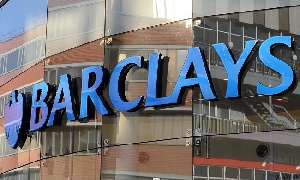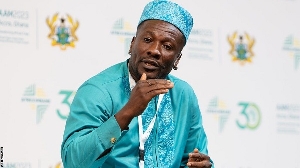Barclays Bank has posted a strong financial performance in the 2017 financial year results – raking in over GH¢550 million of profit before tax – the first time the bank has been able to break the half a billion cedis profitability ceiling.
The bank, which will soon rebrand to Absa following Barclays plc’s decision to reduce its controlling stake in Barclays Africa, recorded a more-than 30 percent increase in profit before tax from the 2016 performance.
Speaking in a media interview, Antoinette Kwofie, Finance Director of the bank, said Barclays remains on course to become the most profitable bank in the country, judging by the performance it exhibited in the past year.
“For the first three quarters in 2017, we were the most profitable bank in the industry. Even though we have not seen all banks’ financials yet, we have a strong indication that we are on track to be the most profitable bank in the banking industry for the 2017 full year”, she said.
“We were able to achieve this performance on the back of a strong risk management culture and driving operation efficiency, and above all sticking close to our customers to understand the things that matter to them and offering value to help them meet all their ambitions in the right way,” Mrs. Kwofie added.
Barclays’ financials, published last week, also indicated that the bank is in a very strong position to meet the Bank of Ghana’s December 31, 2018 deadline for commercial banks to shore-up their stated capital to GH¢400 million.
“We have met the BoG requirement from internal sources without an external capital injection, which speaks to how well-capitalised we are as a bank,” the Finance Director said.
According to the central bank, commercial banks are required to meet the required minimum capital through either fresh capital injection or capitalisation of income surplus, as well as combinations of fresh capital injection and capitalisation of income surplus.
Per the 2017 financial statement, Barclays has well over GH¢500 million income surplus in addition to its existing GH¢115 million stated capital, which puts the bank well beyond the central bank’s new stated minimum requirement benchmark.
Thriving indicators The bank recorded a strong performance on all its income lines as it delivered particularly impressive growth in net-interest – GH¢531 million, and fee-based income of GH¢124 million.
According to the bank’s Finance Director, Mrs. Kwofie, despite a challenging macroeconomic environment and declining margins in the industry, the bank was able to grow its interest income significantly by 20 percent to GH¢669million.
Also, the bank was able to grow the contribution of non-interest income to total income to 40 percent in 2017, from a contribution of 35 percent in the 2016 financial year.
The bank however recorded a 12.7 percent year-on-year increase in its operating costs, which Mrs. Kwofie said was significantly below average inflation in the past year – reflecting the bank’s commitment to pursue efficient banking operations with profitability in view.
In terms of balance sheet performance, the bank’s gross customer loan book grew by 18 percent from GH¢1.92 billion to GH¢2.27 billion, while deposits increased by 11 percent to GH¢3.2 billion.
The bank’s total assets stood at GH¢5.95 billion at end of year 2017, a growth of 13 percent over the previous financial year. The bank’s capital adequacy ratio of 20.45 percent continues to be well above the regulatory threshold of 10 percent.
According to Mrs. Kwofie, apart from running a very profitable and sustainable bank, Barclays remains committed to directly supporting economic growth – having paid as much as GH¢164 million in corporate taxes aside from those paid by the over-2,000 people it directly or indirectly engages.
Click to view details



Business News of Tuesday, 3 April 2018
Source: thebftonline.com

















